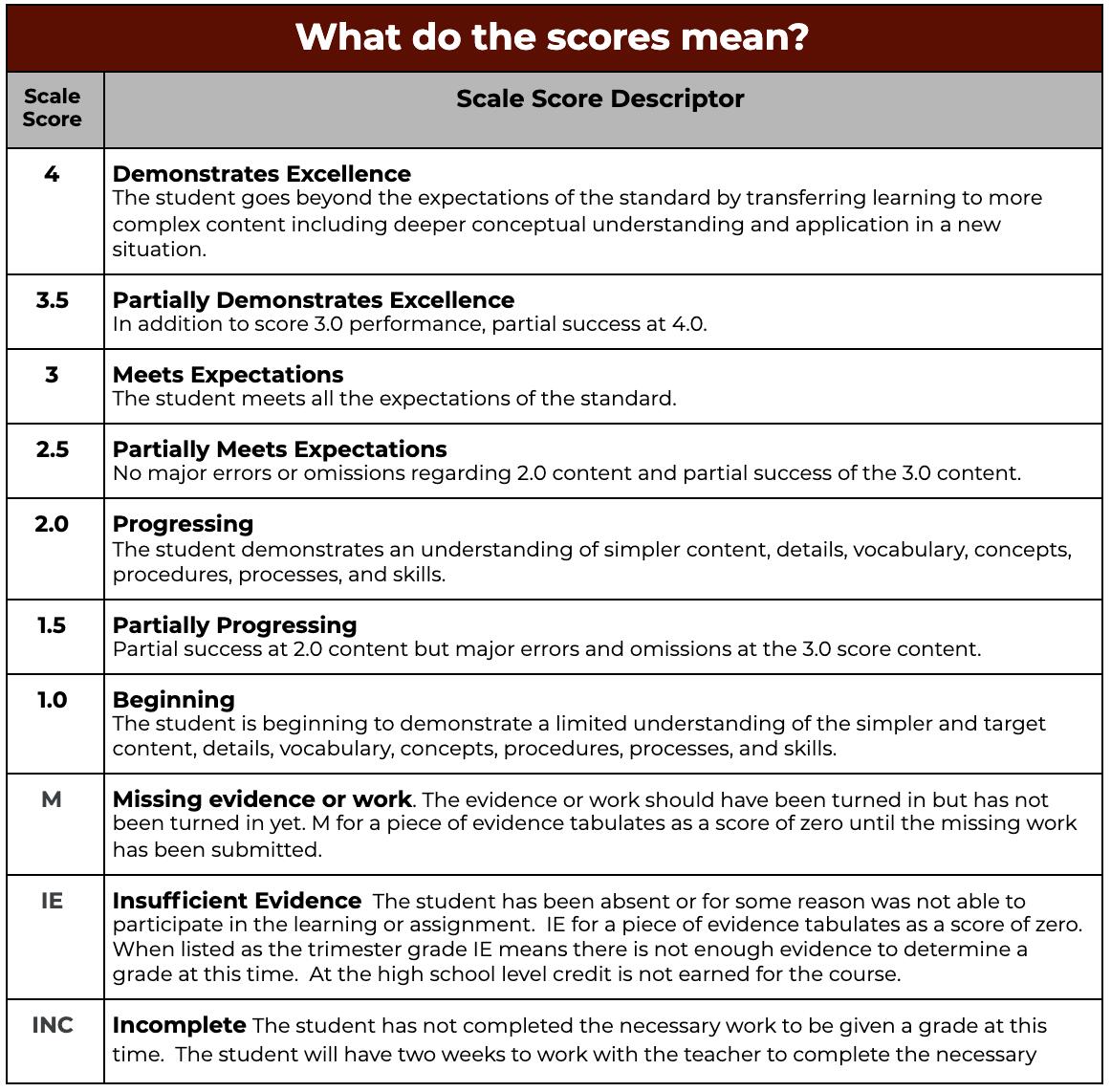Standards-Based Learning & Reporting


The Focus Is On Learning
Families and students have expressed a desire for high expectations for all students, fair and consistent grading practices across the district, a focus on learning not compliance, help for students that struggle, and extensions for those that need to be challenged. In the past, student grades have depended upon what the teacher has determined will be measured to show student learning. This has meant that two students doing exactly the same work could earn different grades in two different classrooms. By implementing standards-based learning and reporting consistent grading/reporting practices are established across the district based on what a student knows and is able to do at each grade level. As part of this process, Oskaloosa Community School District commits to all stakeholders to provide fair, accurate, specific, and timely information regarding student progress towards the Iowa Core Standards. Click here for information about the Iowa Core Standards and the OCSD prioritized standards.
Standards-based learning and reporting only focus on reporting what students have learned and are able to do. In comparison, traditional grading typically averages student work and uses extra factors to determine a final grade. The behavior of students will be kept separate from the academic grade. OCSD maintains that effort, work completion, collaboration, and other skills are important aspects for success in school and life, but should not inflate or deflate a student’s academic grade intended to reflect their understanding of what is being taught in class. When implementing standards-based learning and reporting, teachers will use proficiency scales aligned to instruction, assessment, and feedback.
In grades kindergarten through 6, students will be receiving standards-based grades. This means the report card will show the level of proficiency the student attained on reported standards for that grading period. These students will not receive a traditional letter grade. Click here for more information about K to 6 learning and reporting.
However, in grades 7 through 12 we will continue to use traditional letter grades on report cards. These letter grades will be informed based upon the level of proficiency the student attained on the standards for that grading period. Click here for more information about 7 to 12 learning and reporting.
Proficiency Scales Provide Clear Communication About What a Student Needs To Know And Be Able To Do
The OCSD uses proficiency scales to communicate course standards to all stakeholders including what they look like, what they sound like, and the requirements to meet the standard for the course. The goal of using a proficiency scale is transparency in the stated expectations of success. Proficiency scales for all prioritized standards are used with students in order to understand what is expected to show proficiency. They are also used to provide feedback on strengths, next steps, and areas for growth. Video: How do I read a proficiency scale?


What about students with exceptionalities?
Proficiency Scales for Students with Exceptionalities
Classroom/Content area teachers may need to accommodate grade level/subject area proficiency scales for students in special education, students identified as talented and gifted (TAG), and English Learners (EL). This is a collaborative process in which the grade level/subject area teachers and exceptionality area teachers work together to accommodate a proficiency scale for the learner based on individual need and is documented on the proficiency scale for the individual learner. Accommodations DO NOT change the level of expectation on a proficiency scale, but could change the way the learner demonstrates what they know and are able to do. Not all students in these categories will require accommodations on the standard. It is possible for a student to demonstrate excellence (4) with accommodations.
The majority of students (86%) in special education should be able to demonstrate learning on the grade level/subject area proficiency scales without accommodations. About 12% of students receiving special education services will need accommodations to demonstrate learning on the grade level/subject area proficiency scales. Students receiving special education services that participate in the Alternate Assessment (2%) will be scored on a modified proficiency scale created by the special education teacher (Strategist II: Intellectual Disabilities) based on the Iowa Essential Elements Standards. Modifications DO change the level of the expectation for the learner.
Peer Reviewed Articles and Research
Student Focus Groups Spring 2021 Results
If you have questions about Standards-Based Learning and Reporting please contact Marcia DeVore:
